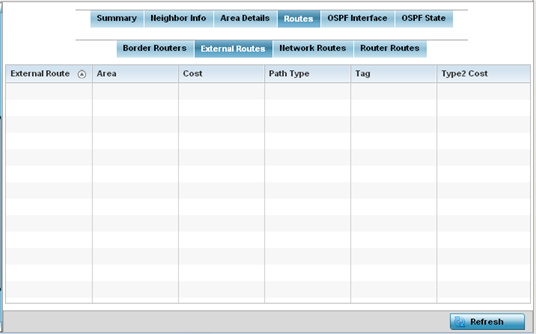To view OSPF external route statistics:

External routes are external to area, originate from other routing protocols (or different OSPF processes) and are inserted into OSPF using redistribution. A stub area is configured not to carry external routes. Each external route can be tagged by the advertising router, enabling the passing of additional information between routers. Each external route can also be tagged by the advertising router, enabling the passing of additional information between routers on the boundary of the autonomous system.
The External route tab displays a list of external routes, the area impacted, cost, path type, tag and type 2 cost. Cost factors may be the distance of a router (round-trip time), network throughput of a link, or link availability and reliability, expressed as simple unit-less numbers. This provides a dynamic process of traffic load balancing between routes of equal cost.

 Print
this page
Print
this page Email this topic
Email this topic Feedback
Feedback